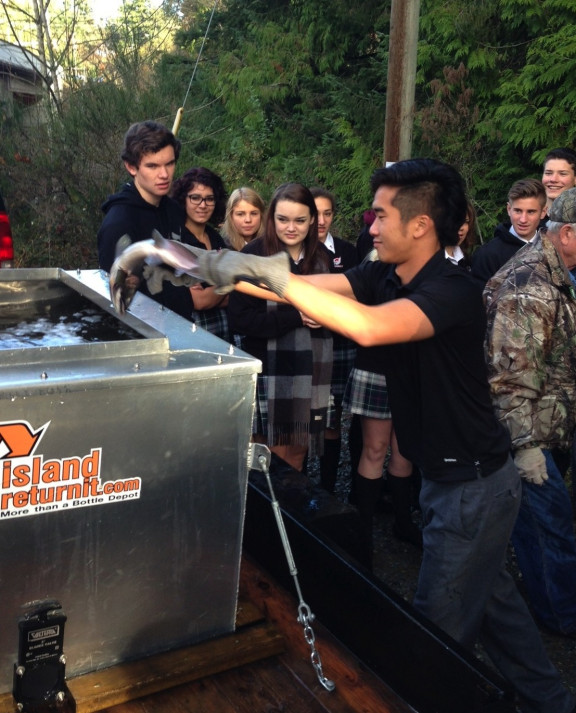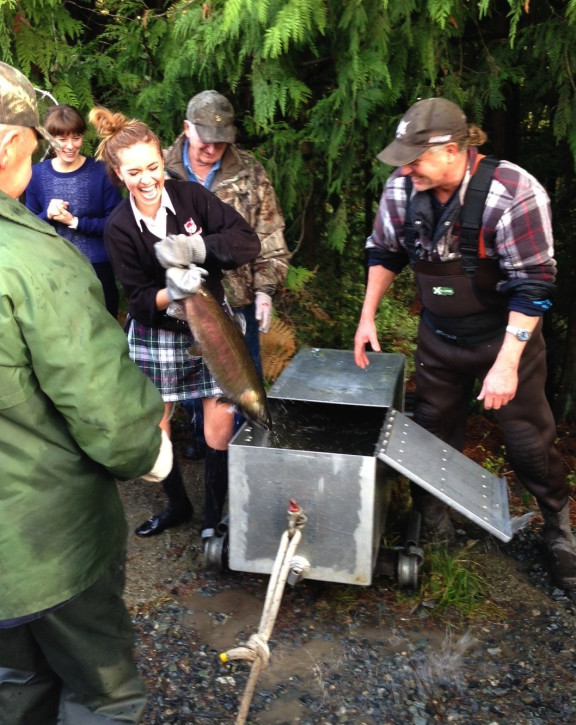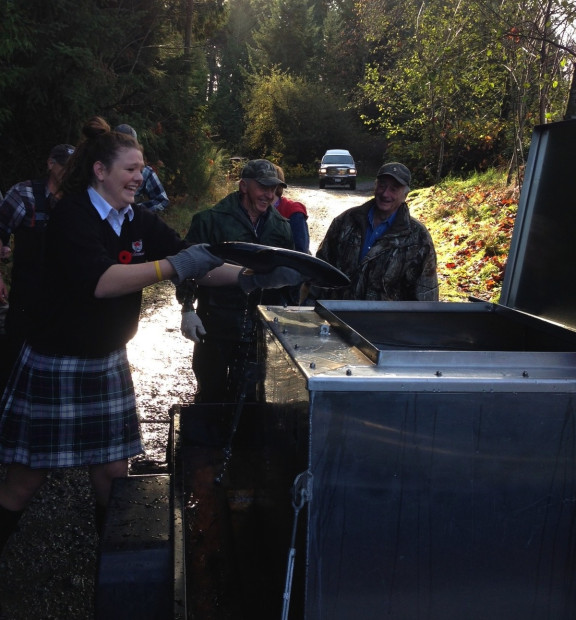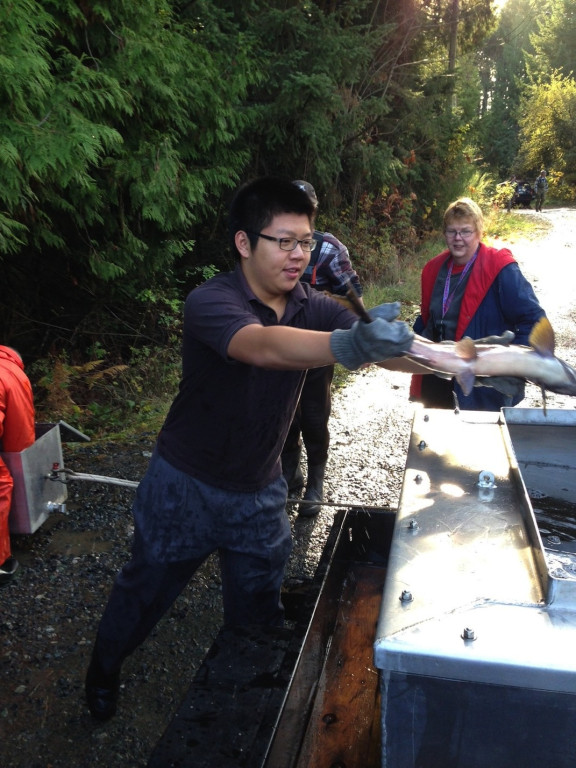50p
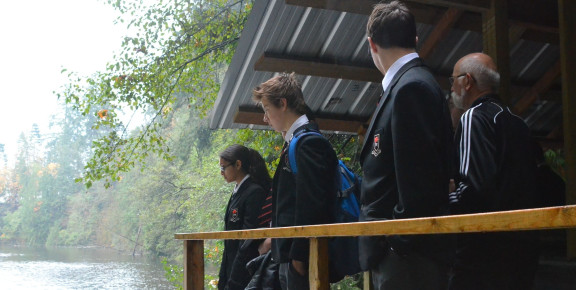
A Life Cycle
The life of a salmon begins when it is born in a freshwater river, the same place where its parents and grandparents were born. It begins as an egg, left by the female, which is then fertilized by the male. Once hatched, it is referred to as an alevin and is still dependent on the yolk sac of its egg for nourishment. It will leave its birthplace weeks later in order to find food. At this stage it has run out of nutrient reserves and is known as a fry.
In the next stage of its development, it is known as a smolt; this is the stage where it will begin to make its way towards the ocean. The ocean stage is the part we have the chance to see now - the time when these fish have fully matured and are looking for a way to return to the place where they were born in order to spawn.
Salmon are anadromous, which means they can live in both saltwater and freshwater. After they have deposited their eggs, the salmon will die, providing nutrients for the surrounding forest, and a new generation will begin.
Our Biology 11 class visited Shawnigan Creek where it empties into Mill Bay right next to our school. If you row or kayak on the ocean around this time, you can see dozens of sizable salmon jumping this way and that - they come so close it would seem they are prepared to jump on top your boat! Seals, otters and birds also linger around to try and catch some to eat. The reason that there are so many salmon right now is because it’s time for them to return to their place of birth to spawn new babies.
They make this trip every year, but are always incapable of climbing the steep waterfall at the mouth of the creek. Volunteers from our community have constructed a building and fish trap and, each year at this time, gather to help the fish get upstream. They catch the fish in nets, and transport them in metal tubs that are hauled up the slope by trucks with winches.
We got to witness this firsthand and some of us even tried to carry the fish over to the trucks from their box. Wool mittens had to be worn so that the fishes’ scales wouldn’t be scratched, and the volunteers showed us how to grab the fish by their tails and toss them in. They are silvery gray or pale pink in colour and they are hard to hold because they are strong and slippery.
The trucks returned over and over to carry more salmon beyond the falls and up Shawnigan Creek. If you signed-up to be part of the Biology Club, you might have even had the chance to help move the fish. Many generous volunteers took time out of their day to help the salmon get upstream and to maintain their natural life cycle.
Cecilia B, Allard ‘17
75p
